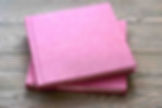What Material Are Book Covers Made Of?
- Steve Bates / President @ Citypress
- Feb 29, 2024
- 3 min read
The history of books is extensive and spans thousands of years. Through the lifespan of books as a human tool and resource, they have gone through multiple evolutionary stages. Aside from the evolution of the knowledge and wisdom recorded within them, books have also seen advancements in the materials used in their manufacturing. So what material are book covers made of today?
Let’s dive deeper into what material are book covers typically made of in today’s modern world!
What Material Are Book Covers Made Of?
As mentioned above, the manufacturing process of books has changed throughout history. With the development of better and more efficient machinery by book printing services, the resources used for books have changed drastically.
Are there different types of materials used for book covers? Of course, in ancient times, book covers were typically constructed of natural materials like wood and leather. Today, it is typical to find book covers made of synthetic and composite materials, including vinyl or plastic.
Here are some of the most commonly found cover types today!
Paper cover
Paper still stands as the most common book cover material. This material is used for softcover copies of books. Multiple versions range from lightweight paper for mass-market distribution and higher-quality paperback editions that use heavier cardstock.
Paper covers for books, also called softcover or paperback covers, are generally used because of their affordability and flexibility. Moreover, paper allows easier handling and bending without damage, which is one concern with hardback covers. The cheap production process and recyclability of paperback books are also factors that aid in making them so popular and common.

Cardboard cover
Similar to paper covers, cardboard covers are very popular and commonly used. They are best used for a hardcover which comes with its own advantages and disadvantages. The main advantage of the hardcover is the protection of pages inside of the book.
Another advantage of a hardcover is the added rigidity and sturdiness, which contribute to a longer lifespan. They are less exposed to wear and tear issues and bending damage. Additionally, in cardboard covers, it is typical to find a spine that helps hold together the pages inside of the book, adding integrity and additional support.
Cardboard covers also allow for a premium feel. Different materials can be used on the cardboard cover to give the book a glossy or textured finish. Customization on cardboard is easy to do by using various methods like embossing, foil stamping, and spot UV to give a personalized feel to a book.
Thickness and rigidity levels of the cover can be chosen and personalized similarly to paperback book covers.

Cloth cover
Cloth book covers are another that uses a cloth material instead of cardboard, paper, or leather. They are typically used for their benefits, such as durability, personalization, customization, and their unique aesthetic.
Cloth is known for its longevity and durability as a material best used for hardcover bindings. This material makes the book cover resistant to wear and tear and prolongs the book's life by protecting the valuable contents inside of the book.
One unique aspect of cloth as a book cover material is the added comfortability. Cloth covers can add a sense of pleasantness, increasing the appeal of the reading experience. Cloth covers also allow for unique printing options, granting further personalization possibilities.

Leather cover
For those looking for a luxurious experience while reading a book, leather book covers are the solution. Leather book covers are hardcover book bindings that offer a luxurious literary adventure.
Leather covers give a feeling of luxuriousness adjacent to a comfortable but timeless appeal. Besides greater durability, protection, and appeal, leather covers are typically attractive to collectors. With many exquisite options for leather, they perfectly complement the limited edition versions of books, adding significant value and beauty.

Plastic cover
Plastic covers for books are usually transparent and thin pieces of plastic that go on top of the original book cover. They are a cheap and effective way of protecting the book cover. Whether the book is rented or the cover is expensive, if you want to protect it against any damage, it is wise to put a plastic cover on top.
Plastic covers can be used for both softcover and hardcover book bindings, making them versatile and reusable. Plastic is usually very durable and spill-proof, unlike paper or cardboard covers. Not only are they cost-effective and durable, they are easy to clean in case of a spill.

Conclusion
The materials for book covers are plentiful. They are designed to be useful in every situation and occasion. Some are manufactured as collector's valuables, while others are for practicality or comfortability. Some of what materials book covers are made of include paper, cardboard, cloth, leather, and plastic. Each cover type provides different and unique solutions to distinct problems.
